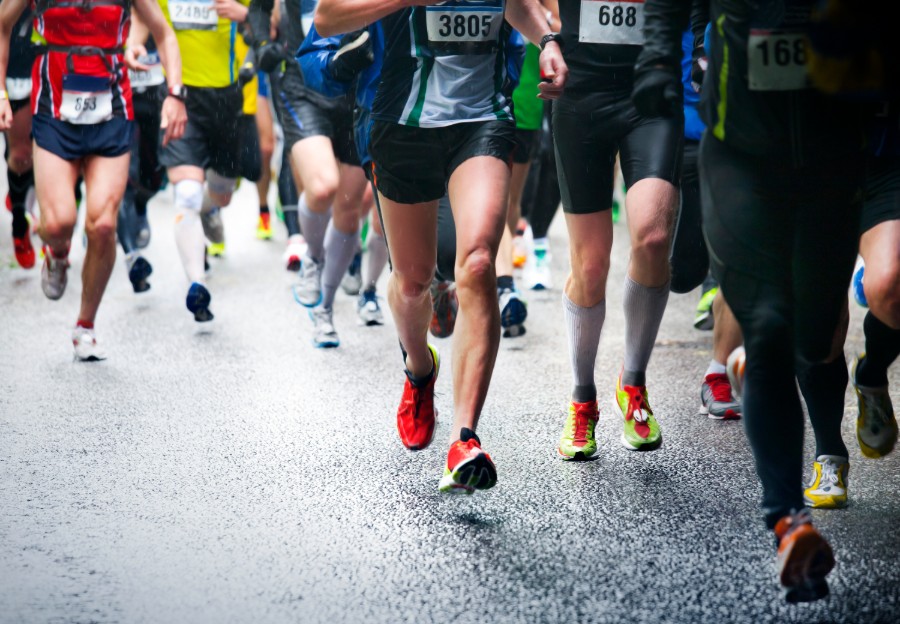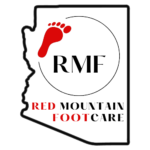Athlete’s Foot: What You Should Know

Athlete’s foot affects the upper layer of the skin on your foot and is considered a fungal infection. It is also sometimes referred to as a tinea pedi. The fungus responsible for athlete’s foot is Trichophyton. It can be found in clothing and on floors and is the most common fungal infection. Some 70% of people will develop this problematic, contagious, condition at some point in their life.
Symptoms of Athlete’s Foot
If you suspect you are suffering from athlete’s foot, you will likely notice the following symptoms, most often between your toes:
- Itching
- Redness
- Stinging
- Burning
- Some people might also notice flaking of the skin
How Does Athlete’s Foot Develop?
Although athlete’s foot is contagious, walking barefoot doesn’t necessarily mean you will develop athlete’s foot. In fact, of those who regularly walk barefooted, only 0.75% will develop athlete’s foot. In reality, the fungus that causes athlete’s foot requires specific conditions to thrive. This includes both warmth and moisture. The perfect environment for athlete’s foot to thrive is tight shoes, that are also moist due to sweat. Damp socks and shoes are the ideal situations for athlete’s foot to thrive. Another ideal environment for athlete’s foot to thrive communal showers and swimming pools, which of course are humid and warm.
How Athlete’s Foot Spreads
Athlete’s foot can be spread both directly and indirectly via the following methods:
- Contaminated towels, bed sheets, shoes, socks, clothing from contaminated surfaces.
- Touching another person in the affected area via skin-to-skin contact.
Types of Athlete’s Foot
There are three main types of infections that are considered athlete’s foot. They are as follows:
- Toe Web Infection: This is an interdigital infection and develops between the toes or fingers.
- Vesicular Infection: This type of infection presents as blisters.
- Moccasin Infection: Usually presenting on the soles of the feet is a moccasin infection. It can even spread up the side of your foot and heel.
How Athlete’s Foot is Diagnosed
Often, you can self-diagnosis athlete’s foot by observing the signs and symptoms, especially if you have had the condition before. However, if you aren’t sure you have athlete’s foot, you should visit a podiatrist to rule out psoriasis, dermatitis or a skin infection. If you visit your doctor for a proper diagnosis. Your podiatrist will often perform a test called a skin lesion that is then tested in a potassium hydroxide (KOH) solution. This solution successfully removes human cells, leaving behind only fungal cells, which can be viewed with a microscope.
Athlete’s Foot Treatment
In the majority of situations, athlete’s foot can be treated with over the counter medications. These creams or medications will clear up the fungus associated with the condition. You can get antifungal medication in the following forms:
- Creams
- Sprays
- Liquids
- Powders
- Tablets
Ask a pharmacist to recommend one of the following antifungal medications:
- Sulconazole
- Terbinafine
- Miconazole
- Ketoconazole
- Econazole
- Clotrimazole
For More Severe Cases of Athlete’s Foot
In some cases, where you have experienced swelling and the skin is sore, your doctor might recommend you also use hydrocortisone cream. If the fungal infection still doesn’t respond, your doctor might even write a prescription-strength hydrocortisone cream.
Home Treatments for Athlete’s Foot
If you recognize the symptoms of athlete’s foot, you can try the following home remedies:
- Soak feet in either diluted vinegar or saltwater to clear up blisters.
- Wash feet with soap and water regularly.
- Soak feet in tea tree oil solution.
- After washing, make sure you dry your feet completely, even between the toes.
Preventing Athlete’s Foot
Of course, if you can prevent athlete’s foot from occurring, it’s even better than learning how to treat it after the fact. Make sure you do the following to reduce your risk of getting athlete’s foot:
- Do not share towels and wash them regularly.
- Change socks and shoes often, keeping your feet dry.
- Ensure your socks are clean.
- Make sure to wash your feet at least twice daily with soap and water. Make sure you clean between the toes.
- Make sure your feet are as dry as possible. In some cases, using an antifungal talcum powder can be utilized.
- When you can, such as when you are home, walk around barefoot.
- Remove sweaty shoes as soon as your workout is over.
- Make sure your tennis shoes are well ventilated and loose-fitting.
- Before putting on stockings, tights or socks, make sure your feet are dry.
- When walking in or around communal shower areas, changing rooms or pools, make sure you wear slippers.
- Do not share your footwear with anyone.
Complications: When Athlete’s Foot Requires Professional Treatment
In some cases, though athlete’s foot is a mild condition, complications can arise that require a visit to our offices at Red Mountain Footcare. The following are a few of these complications:
- Secondary Bacterial Infection: This happens on occasion with athlete’s foot and presents itself as a swollen, hot and painful foot.
- Fungal Nail Infection: In some cases, if you don’t treat athlete’s foot, the fungus to spread to the toenails. This condition is called onychomycosis. It causes the nail to become crumbly, whitish, opaque and thick. There also might be some inflammation and pain under the nail.
- Cellulitis: In severe cases, an athlete’s foot can lead to a deep bacterial infection. Untreated, cellulitis can lead to blood poisoning and bone infection if left untreated.
- Infected Lymph System: Lymphangitis is an infection of the lymph nodes.
- Allergy: In some cases, patients can react severely to the fungus, leading to blistering of the feet or hands.
Contact Us
If you suspect you have athlete’s foot and want to ensure you are treating it correctly, contact us at Red Mountain Footcare for more information. Remember, it’s important for you to treat athlete’s foot properly to ensure it doesn’t lead to subsequent complications.
